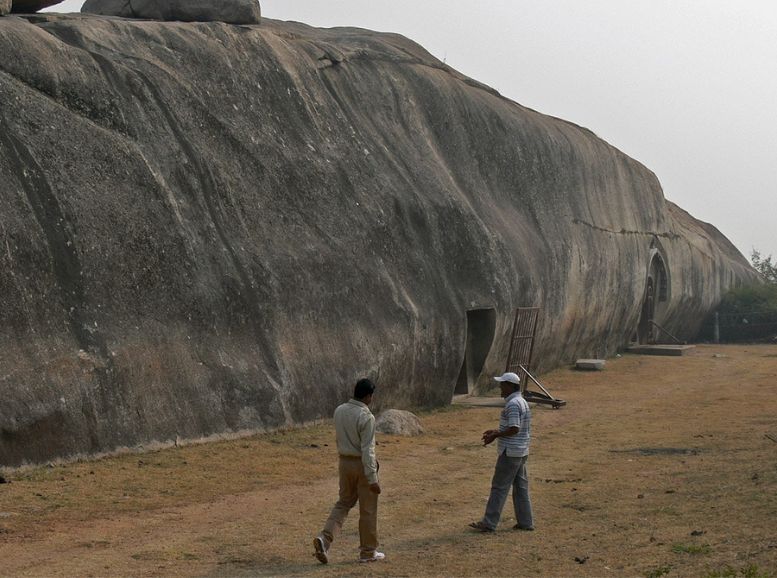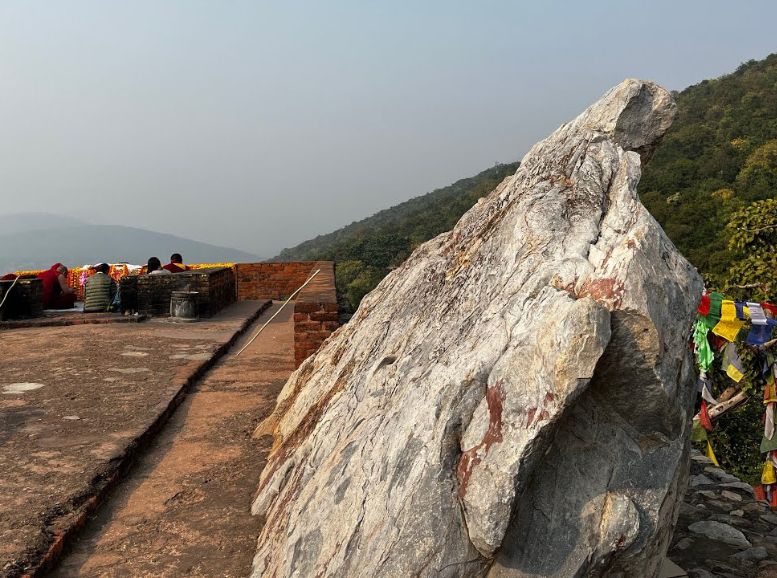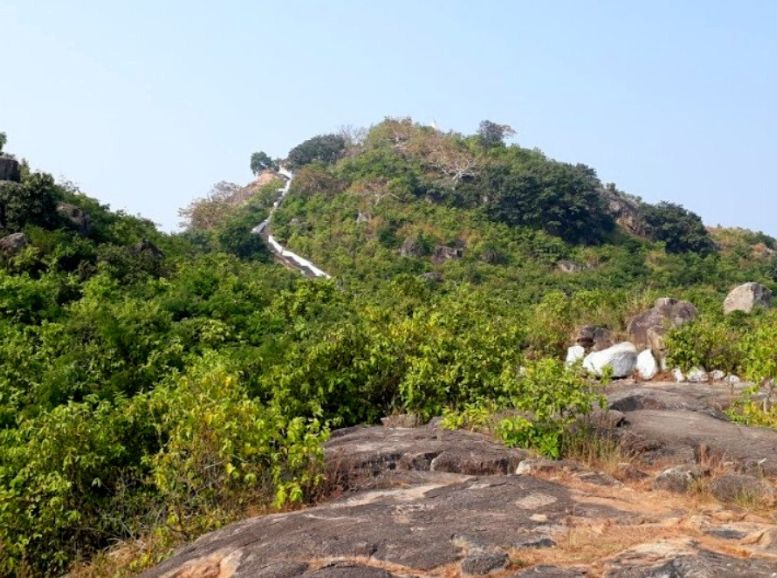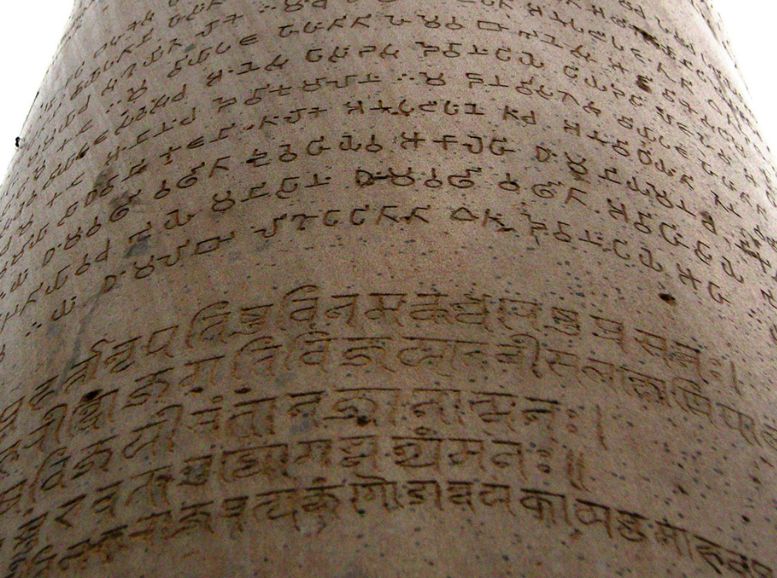In the heart of Sultanpur, Bihar, lies a hidden gem that whispers tales of a bygone era. The Barabar Caves, a stunning ensemble of rock-cut temples and caves, stands as a testament to the region’s architectural and cultural prowess. As you venture into the tranquil surroundings of Barabar, the gentle rustle of leaves and the soft filtering of light through the caves’ intricate carvings will transport you to a world steeped in history and natural beauty. In this travel guide, we’ll embark on a journey to unravel the secrets and significance of Barabar Caves, and uncover the experiences that make this ancient wonder a must-visit destination for any traveler seeking an immersive adventure.
How to reach:
- By Road: Regular buses and private taxis connect Makhdumpur town (15 km away) to Barabar. You can also hire vehicles from Patna and Gaya.
- By Train: The nearest railway station is Makhdumpur (15 km away), with another local station at Vanavar Halt on the Gaya-Patna route.
- By Air: The closest airport is Gaya (32 km away), with Patna airport (80 km away) offering an alternative option.
Best time to visit:
October to November: As the monsoon retreats, pleasant weather descends upon Bihar. The surrounding landscapes flourish with greenery, creating a picturesque backdrop for exploring the caves.
December to February: Bihar experiences its coolest stretch during these months, with temperatures hovering between 10°C and 20°C. This dry and comfortable climate makes it an ideal time for outdoor activities and sightseeing.
March: Temperatures begin to rise slightly in March, but the weather remains comfortable for travel. This marks the tail end of the peak tourist season, so expect fewer crowds.
About the caves:

Whispering tales of a bygone era, the Barabar Caves in Bihar’s Jehanabad district are the oldest surviving rock-cut caves in India, dating back to the 3rd century BCE. Their meticulously polished interiors and intricate carvings speak volumes about the advanced craftsmanship of the Mauryan period. Each cave boasts its own unique charm: the Lomas Rishi Cave with its detailed chaitya arch, the Sudama Cave dedicated by Emperor Ashoka showcasing religious tolerance, the Karan Chaupar Cave with its flawlessly polished chamber, and the Vishvakarma Cave, also known as the Carpenter’s Cave, distinguished by its horseshoe-shaped entrance. Inscriptions found within, including some by Ashoka himself, offer a glimpse into the religious and cultural practices of the time. A testament to the ingenuity and artistic prowess of ancient India, the Barabar Caves remain a significant attraction for historians, archaeologists, and travelers seeking a glimpse into the past.
Nearby Attractions:
Griddhakuta Hill (Vulture’s Peak):

Shaped like a vulture’s beak and cradled by verdant hills, Griddhakuta Hill in Rajgir, Bihar, soars with spiritual significance for Buddhists. Here, Gautama Buddha is believed to have delivered some of his most profound teachings, including the Heart Sutra and the Lotus Sutra. Pilgrims flock to this sacred site, some choosing the contemplative trek up the mountain path, others opting for the scenic ropeway ride with its panoramic vistas. Atop the peak, tranquility reigns. Ancient structures whisper of the past, creating a meditative ambiance perfect for reflection. Griddhakuta Hill transcends religious importance, its natural beauty a haven for nature lovers, and stands as a lasting testament to the enduring legacy of Buddha’s wisdom.
Brahmajuni Hill:

Shrouded in legend and boasting panoramic vistas, Brahmajuni Hill near Gaya, Bihar, is a magnet for both the spiritually inclined and adventure seekers. Climbers brave over a thousand stone steps, their efforts rewarded with breathtaking views and a glimpse into the past. Ancient stupas and meditation caves whisper tales of Buddhist history, while the summit unveils a tranquil haven of temples and shrines marking significant moments in Buddha’s life. This unique blend of religious reverence, historical intrigue, and natural beauty makes Brahmajuni Hill a compelling destination for those seeking enlightenment, historical knowledge, or simply a connection with nature’s serenity.
Ashokan Edicts, Barabar Caves:

The Barabar Caves’ fame extends beyond their polished walls. Inscribed within are the Ashokan Edicts, pronouncements carved by Emperor Ashoka in the 3rd century BCE. These edicts, some of India’s earliest written records, offer a glimpse into his reign. Written in Brahmi script, they espouse moral values like non-violence, tolerance, and compassion, revealing Ashoka’s dedication to both Buddhism and his subjects’ welfare. Part of a larger collection marking locations tied to his rule, these edicts elevate the Barabar Caves’ historical significance. Moreover, they illuminate Ashoka’s profound impact on shaping ancient India’s religious and cultural landscape. For historians and archaeologists, these inscriptions are invaluable, offering insights into governance, philosophy, and societal values under one of India’s most revered emperors.
Local Experiences:
Exploring Rock-Cut Caves:
- Take a guided tour of the Barabar Caves to learn about their history, architecture, and significance in the context of the Mauryan Empire and Ajivika sect.
Participating in Religious Ceremonies:
- Participate in or observe the Pind Daan rituals at the Vishnupad Temple in Gaya, where Hindus perform ceremonies for the salvation of their ancestors’ souls.
Meditation and Yoga Retreats:
- Join a meditation or yoga retreat at one of the many monasteries in Bodh Gaya to experience spiritual practices in the place where Buddha attained enlightenment.
Trekking and Nature Walks:
- Trek up to Vulture’s Peak in Rajgir, where Buddha delivered key sermons, and enjoy the panoramic views and serene environment.
- Embark on a trek to Brahmajuni Hill for scenic views and to explore ancient stupas and meditation spots.
Historical and Cultural Tours:
- Visit the ruins of Nalanda University with a knowledgeable guide to understand the historical significance and architectural splendor of this ancient center of learning.
- Explore Rajgir’s historic sites, including Venu Vana, Saptaparni Cave, and Rajgir Hot Springs, to delve into the region’s Buddhist and Jain heritage.
Local Cuisine:
- Savor traditional Bihari cuisine at local eateries and food stalls. Dishes like litti chokha, sattu paratha, and pua provide a taste of the region’s culinary heritage.
- Try local street food specialties like chaat, samosas, and sweets around the Mahabodhi Temple complex in Bodh Gaya.
Travel tips:
Getting Around:
- Taxis and Car Rentals: Opt for taxis or car rentals for comfortable travel, especially if you plan to visit multiple locations.
- Public Transport: Buses and trains offer affordable intercity travel, but be prepared for delays and crowds.
Where to Stay:
- Booking Ahead: Book your accommodation in advance, particularly during peak seasons, to secure your spot.
- Convenient Locations: Choose to stay in Gaya, Bodh Gaya, or Rajgir for easy access to major attractions and better lodging options.
Staying Healthy and Safe:
- Vaccinations: Research any recommended or mandatory vaccinations before your trip.
- First-Aid Kit: Pack a basic first-aid kit with any personal medications, bandages, antiseptic wipes, and pain relievers.
- Food and Water: Stick to bottled or purified water to avoid getting sick. Enjoy local cuisine, but ensure food is freshly prepared and steaming hot.
Cultural Awareness:
- Dress Modestly: Opt for modest clothing, especially at religious sites. Long sleeves and pants or skirts are appropriate.
- Respect Local Customs: Be mindful of local traditions. Remove shoes before entering temples and religious areas.
- Photography Etiquette: Always ask permission before photographing people, particularly in rural areas or during ceremonies. Respect areas where photography might be restricted.
Practicalities:
- Languages: Hindi and English are widely spoken, but learning a few basic phrases in the local dialect can be helpful.
- Cash and Currency Exchange: Carry sufficient cash for smaller towns with limited ATMs or card facilities. Exchange currency at authorized counters or ATMs in major cities.
- Mobile Connectivity: Purchase a local SIM card for reliable phone and internet access.
- Power Bank: Pack a portable charger to keep your devices powered up, especially during extended explorations.
Conclusion
Unveiling the magic of Bihar – a land steeped in culture, history, and spirituality – begins with the captivating Barabar Caves. Craft your perfect itinerary on Xplro.com to explore these meticulously carved Mauryan era caves, the sacred grounds of Bodh Gaya where Buddha attained enlightenment, and countless other treasures. From participating in Gaya’s Pind Daan rituals to trekking the serene heights of Griddhakuta Hill, immerse yourself in the vibrant local culture and delectable cuisine. Every moment in Bihar promises discovery and wonder. Plan your unforgettable adventure today with Xplro.com.
FAQs
What are the Barabar Caves?
- The Barabar Caves, situated in Bihar’s Jehanabad district, are India’s oldest surviving rock-cut caves, dating back to the 3rd century BCE during the Mauryan period. They are famous for their polished interiors and detailed carvings.
When is the ideal time to visit the Barabar Caves?
- The ideal time to visit the Barabar Caves is between October and March. During these winter months, the weather is cool and pleasant, making it comfortable for sightseeing.
How can I rget to the Barabar Caves?
- The Barabar Caves are about 40 kilometers from Gaya. The best way to reach them is by hiring a taxi or renting a car. Gaya is the nearest city with a railway station and an airport.
Are there any entry fees for visiting the Barabar Caves?
- Currently, there are no entry fees to visit the Barabar Caves. However, it’s advisable to check for any updates or changes in this policy before planning your visit.
What other attractions are near the Barabar Caves?
- Nearby attractions include the ancient Nalanda University ruins, the historic city of Rajgir, the spiritual center of Bodh Gaya, and the pilgrimage city of Gaya. Each location offers significant historical and religious sites.
What should I wear when visiting the Barabar Caves?
- It is best to wear comfortable, modest clothing suitable for walking and climbing. Light, breathable fabrics are ideal during the day, and a light jacket is recommended for cooler evenings in the winter.
Can I take photographs inside the Barabar Caves?
- Yes, photography is allowed inside the Barabar Caves. However, it is important to check for any specific restrictions and respect local guidelines, especially in sensitive or religious areas.
Are there guided tours available for the Barabar Caves?
- Guided tours are available and recommended for the Barabar Caves. A local guide can provide valuable information about the caves’ history, architecture, and cultural significance.
What is the significance of the inscriptions found in the Barabar Caves?
- The inscriptions, including those by Emperor Ashoka, are significant as they provide historical context and insights into the religious and cultural practices of that era. They are among the earliest written records in India.
Is there accommodation available near the Barabar Caves?
- While there are no accommodations directly at the Barabar Caves, nearby towns such as Gaya, Bodh Gaya, and Rajgir offer a variety of lodging options, ranging from budget to luxury hotels.
What local food should I try when visiting Bihar?
- When visiting Bihar, try traditional dishes like litti chokha, sattu paratha, and pua. Street foods such as chaat, samosas, and local sweets are also popular and delicious.
What are the safety tips for visiting the Barabar Caves and surrounding areas?
- To ensure a safe visit, carry bottled water, wear comfortable walking shoes, secure your belongings, and follow local guides’ and authorities’ advice. Additionally, respect local customs and traditions during your stay.





